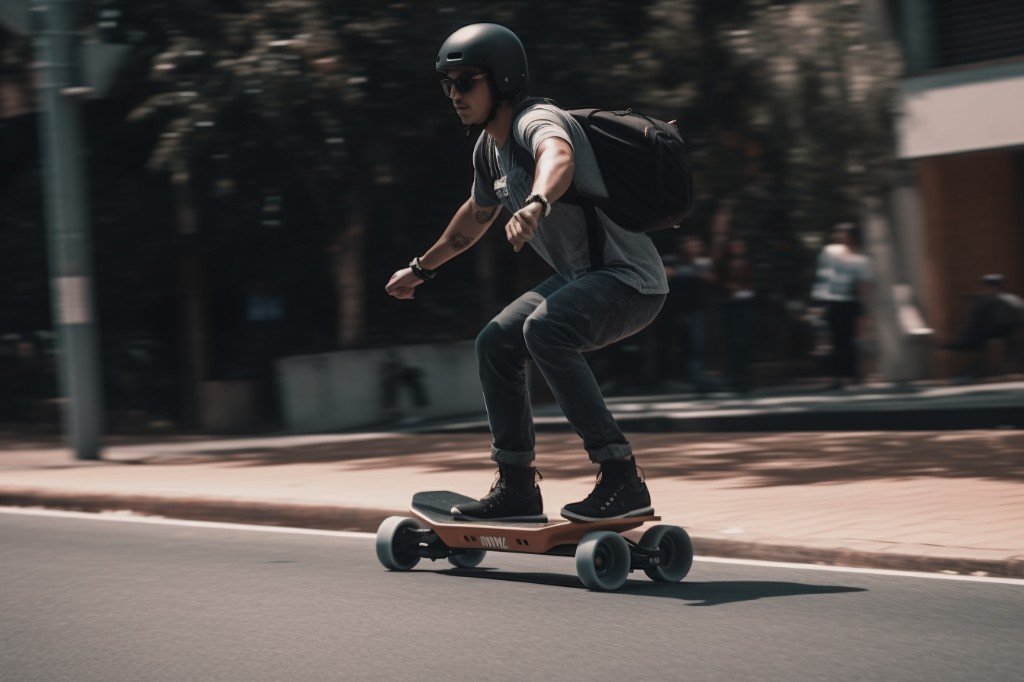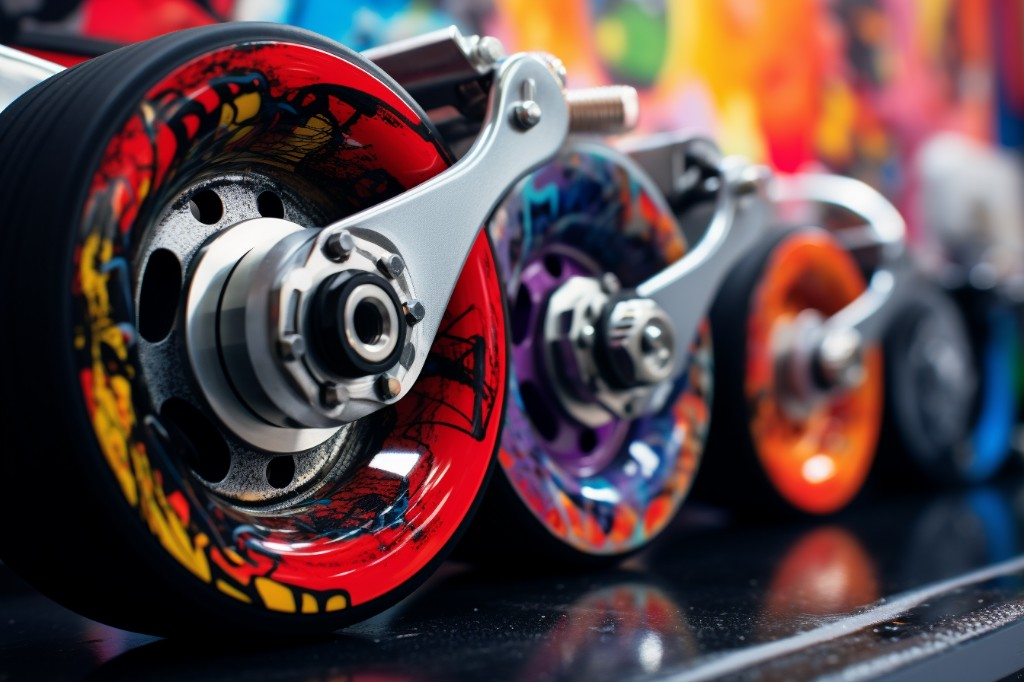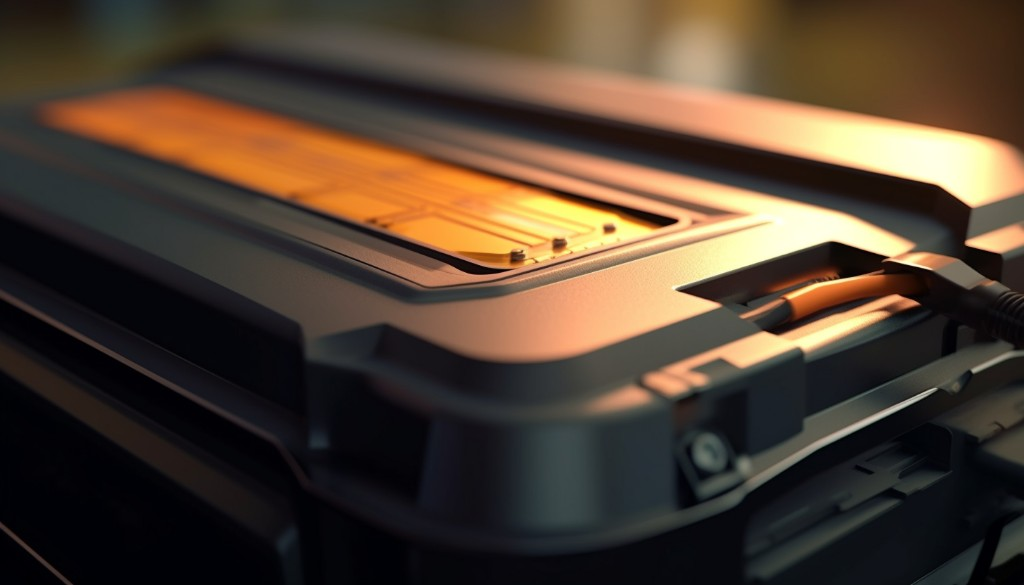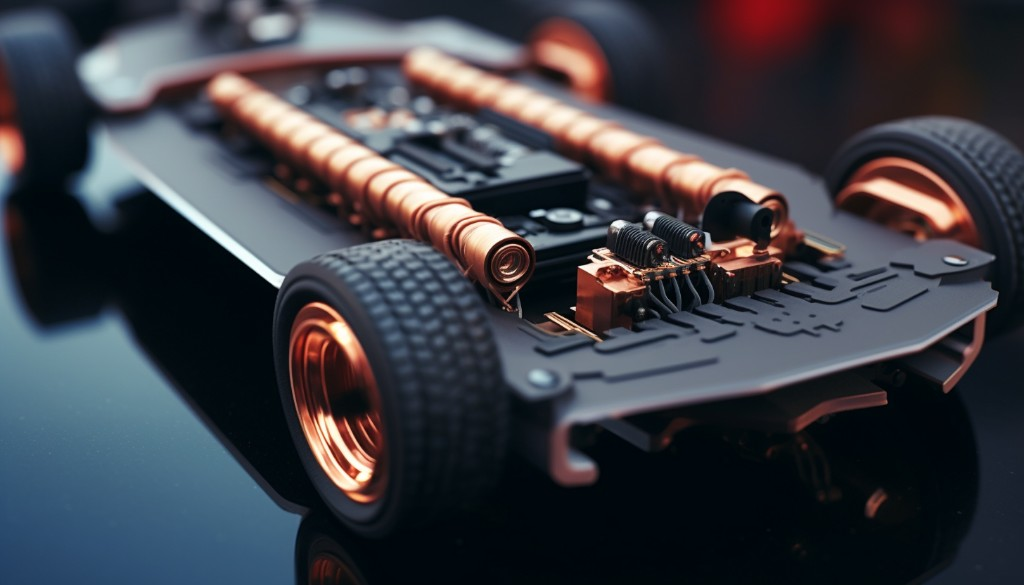Have you ever marveled at the seamless glide of an electric skateboard as it effortlessly zips past you on the sidewalk? The future of urban mobility is here, and it’s not just a buzzword; it’s an exhilarating ride powered by cutting-edge technology that we’re about to delve into. Intrigued? We thought you might be.
What we’ll cover:
- Understanding E-Skateboards
- Essential Components
- The Working Principle
- Safety Measures
- Advanced Features
- Utilizing E-Skateboards
- Speed and Power Mechanics
- Versatility of E-Skateboards
- Maintenance Tips
So, strap on your helmet, we’re about to embark on a thrilling journey into the world of electric skateboards!
Understanding Electric Skateboards
You know, the first time I saw an electric skateboard, I was fascinated by its cool factor. But it wasn’t until I rode one that I truly appreciated its beauty. An electric skateboard is like a traditional skateboard on steroids. It gives you the freedom to cruise around without having to push with your foot. But how do e-skateboards work?
The mechanism behind e-skateboards is pretty simple. They’re powered by an electric motor and a battery. When you use the remote control to give it a command, the command is transmitted to the Electronic Speed Controller (ESC), which then regulates the power from the battery to the motor, moving the skateboard.

Defining Electric Skateboards
An electric skateboard is essentially a regular skateboard with an electric motor and a battery added to it. Unlike a traditional skateboard, which requires the rider to push off the ground to move, an electric skateboard propels itself forward with the help of the motor.
It’s like comparing a bicycle to a motorcycle. Both can get you from point A to B, but the way they do it is vastly different. The same goes for a traditional skateboard and an e-skateboard. The latter offers an effortless ride, making it an attractive alternative for many.
Advantages & Disadvantages of Electric Skateboards
The world of electric skateboarding brings with it many benefits. You can travel faster and further than on a traditional board, and you can easily conquer hills that would have been difficult or impossible to climb otherwise. Plus, there’s the sheer fun of zipping around on a motorized board.
But are electric skateboards safe? Like any mode of transportation, they come with risks. You’re moving at higher speeds, which could lead to more severe injuries in case of a fall or collision. Also, the batteries in these boards have been known to overheat or even catch fire in rare instances.

Essential Parts of an Electric Skateboard
So, what are the different parts of an e-skateboard that make it so unique? Well, there are several components that come together to make this modern marvel work.
The Deck and Grip Tape
The deck is the part of the e-skateboard where you stand. It’s usually made of wood, bamboo, or composite materials. The grip tape on top of the deck provides traction for your feet, ensuring you don’t slip off while riding.
The deck and grip tape are as crucial to an e-skateboard as they are to a traditional one. They provide the platform for your ride and help you maintain balance and control.
Trucks and Wheels
The trucks and wheels are other vital parts of an electric skateboard. The trucks connect the wheels to the deck and allow you to steer by shifting your weight. Meanwhile, the wheels enable you to roll smoothly over different surfaces.
There are various types of e-skateboard wheels, each designed for specific riding conditions. Street wheels, for example, are ideal for smooth pavements, while all-terrain wheels can handle rougher surfaces.

Street Wheels Vs All-Terrain Wheels Vs Urban-Terrain Wheels
When choosing between street wheels, all-terrain wheels, or urban-terrain wheels, consider your riding conditions. Street wheels work best on smooth, paved surfaces. All-terrain wheels, as the name suggests, can handle various surfaces – from pavement to dirt trails. Urban-terrain wheels fall somewhere in between, offering versatility for both city streets and light off-road conditions.
The Role of Bearings in Electric Skateboards
As I discovered during my journey into the world of electric skateboards, bearings play a crucial role in how these machines function. Much like their role in traditional skateboards, bearings in an electric skateboard enable the wheels to spin freely and smoothly. Without them, it would be impossible for the wheels to roll at all, let alone at high speeds.
However, unlike traditional skateboards, electric skateboards have motors that generate torque to move the board forward. The bearings, therefore, must be capable of handling the increased stress and heat produced by the motor’s operation. This is why electric skateboard bearings are often made from robust materials such as ceramic or high-quality steel.

The Motor Types
Now let’s dive into the heart of an e-skateboard – the motor. There are several types of motors used in electric skateboards, including hub motors, belt motors, direct drive motors, and gear drive motors.
Hub motors are integrated directly into the wheels of the skateboard. They are known for their quiet operation and low maintenance needs. However, they might lack the torque necessary for steep hills or quick acceleration.
Belt motors, on the other hand, are external motors that drive the wheels via a belt system. They offer higher torque and better heat dissipation compared to hub motors. However, they require regular maintenance to ensure the belt system remains in good condition.
Direct drive motors combine the best of both worlds. They provide excellent torque and efficiency while requiring less maintenance than belt motors. However, they can be a bit more expensive.
Lastly, gear drive motors use a gear system instead of belts or direct integration into the wheels. They offer impressive torque and efficiency but require regular maintenance to keep the gears in good shape.
Undoubtedly, whichever motor type your board has, motor maintenance for your electric skateboard is essential.
Hub Motor Vs Belt Motor Vs Direct Drive Motors Vs Gear Drive Motors
Comparing these different types of drive motors reveals their unique strengths and weaknesses. Hub motors are quiet and require little maintenance, making them a great choice for casual riders or those who prefer a quieter ride. However, they may struggle on steep hills or when quick acceleration is required.
Belt motors, with their higher torque, are better suited for tackling steep inclines or achieving rapid acceleration. They do require more maintenance, but the performance benefits might be worth the extra effort for some riders.
Direct drive motors strike a balance between performance and maintenance. They offer excellent torque and efficiency while requiring less maintenance than belt motors. However, the higher cost may be a deterrent for some.
Gear drive motors, like belt motors, provide impressive torque and efficiency. They do require regular maintenance, similar to belt motors. However, the use of gears instead of belts can offer some advantages in terms of durability and reliability.
The Battery
The battery is another essential component of an electric skateboard. It provides the power needed for the motor to operate. Electric skateboard batteries are typically lithium-ion or lithium-polymer types due to their high energy density and long lifespan. The battery motor powers the skateboard by delivering electricity to the motor, which then converts this energy into mechanical energy to drive the wheels.

Electronic Speed Controller (ESC) in Detail
The Electronic Speed Controller (ESC) plays a critical role in controlling the speed of an electric skateboard. It serves as the intermediary between the battery and the motor. When you use the remote control to adjust your speed, the signal goes to the ESC, which then modulates the amount of power sent from the battery to the motor. The electronic speed controller can increase or decrease power delivery, allowing you to speed up or slow down as needed.
Remote Control Functionality
The remote control is your direct line of communication with your e-skateboard. With it, you can control the speed and direction of your board. Most remote controllers use a simple thumbwheel or trigger mechanism to control speed, with a forward push or pull to accelerate and a backward push or pull to brake. Some remote controls also include features like a battery level indicator or even a screen to display speed and other data.
Using the remote control, you can precisely control your electric skateboard’s speed and direction, making for a smooth and enjoyable ride. The remote controller communicates with the ESC, which then adjusts the power delivery to the motor based on your input, allowing you to navigate your surroundings with ease.

The Working Mechanism of Electric Skateboards
When it comes to understanding how electric skateboard works, it’s crucial to grasp how all its components interrelate. It’s much like a symphony orchestra; every instrument has its unique role, but it’s the harmonious integration of all that creates the beautiful music. The e-skateboard is no different.
How the Motor Powers the Skateboard
At the heart of the e-skateboard work is the electric motor. This ingenious device is the drummer in our symphony, setting the rhythm and pace. It converts electrical energy stored in the battery into mechanical energy, which then powers the wheels.
The electric motor works in tandem with the battery, which acts like the lifeblood of the skateboard motors, providing the essential energy for movement. The motor and battery are like partners in a dance, perfectly synced to create fluid motion. The stronger and more efficient these partners are, the better your ride will be.
How the ESC Controls Speed
But what about speed control? That’s where the ESC comes into play. Think of it as the conductor of our orchestra, guiding and controlling the tempo. The ESC manages and adjusts the electric current from the battery to the motor, effectively controlling how fast or slow your skateboard moves.
The speed controller also plays a vital role in braking. When you apply brakes via your remote control, the electronic speed controller reverses the current flow, slowing down the motor and thus, your e-skateboard.

How the Remote Control Interacts with the Electric Skateboard
Speaking of remote control, it’s a fascinating piece of technology. Acting as your personal maestro, you command your board’s movements with it. This remote controller communicates wirelessly with the ESC, sending signals to accelerate, decelerate, or stop entirely. This interactive mechanism is the core of how electric skateboard works, providing riders full control over their journey.
Electric Skateboard Safety
Now, let’s switch gears and talk about something equally important – safety. Riding your electric skateboard safely should be paramount, as the thrill of the ride should never compromise your well-being.
Safe Riding Practices
Riding an electric skateboard is exhilarating, but it’s vital to follow some safety practices. It’s like learning to play a new instrument; you need to learn the basics before you can start improvising. Always wear a helmet, elbow pads, and knee pads to protect yourself in case of a fall. Also, practice riding your electric skateboard in a safe, open space before hitting busy streets. Be aware of your surroundings and respect traffic rules to ensure a safe ride.
The Importance of Brakes in Electric Skateboards
Finally, let’s talk about brakes – the unsung heroes of any e-skateboard. They work in tandem with the ESC to provide regenerative braking – a feature that not only slows you down but also charges the battery a bit during the process. It’s like hitting two birds with one stone!

Understanding how these brakes work and learning to use them effectively is crucial for safe riding. Always remember that mastering the brakes on your electric skateboard can be a lifesaver, quite literally. Just like a well-timed pause in music can create an impactful effect, effective use of brakes can make your skateboarding experience safer and more enjoyable.
Closing Thoughts
Electric skateboards, with their intricate system of components and advanced features, have revolutionized personal transport. At the core of these innovative devices are essential parts such as the motor, battery, and electronic speed controller, all working together to deliver a seamless skateboarding experience. The speed and power of these e-skateboards are determined by intricate mechanical processes that respond to user control inputs. Despite their technological complexity, e-skateboards can function as regular skateboards when the battery dies, offering users versatility.
Safety is paramount in the design and use of electric skateboards, with manufacturers incorporating features like regenerative braking and users advised to wear protective gear. Whether you’re a tech enthusiast, commuter, or skateboard aficionado, e-skateboards cater to a wide range of users.
Frequently Asked Questions
How do electric skateboards work?
E-skateboards work by combining a traditional skateboard design with an electric motor, a battery, and an electronic speed controller. The user controls the skateboard’s speed and direction using a wireless remote control.
What are the essential parts of an electric skateboard?
The essential parts of an electric skateboard are the deck, trucks, wheels, motor, battery, electronic speed controller, and the wireless remote control.
How does the remote control interact with the skateboard?
The remote control interacts with the skateboard by sending signals to the electronic speed controller which then adjusts the power delivered to the motor, thus controlling speed and direction.
Can you use an electric skateboard like a regular skateboard when the battery dies?
Yes, you can use an electric skateboard like a regular skateboard when the battery dies. However, due to the added weight of the motor and battery, it might be more difficult to push than a regular skateboard.
What safety measures should you take when riding an electric skateboard?
When riding an electric skateboard, it’s important to always wear protective gear including a helmet, knee pads, and elbow pads. Also, familiarize yourself with the skateboard’s controls and features before starting to ride.
